As horse owners, we hope we will never face digestive upsets in our equine pals, especially that terrible five letter word – colic. Equines differ from most grazing animals, like cows or sheep, in that they are monogastric (single-chambered stomach) rather than ruminant (four-chambered stomach). The single equine stomach is also quite small relative to their larger body size, which means that food passes quickly through the stomach, explaining their evolutionary need to graze continuously for gut health. In this blog, we will go over the basics of colic and how to prevent and recognize the signs.
What is colic?
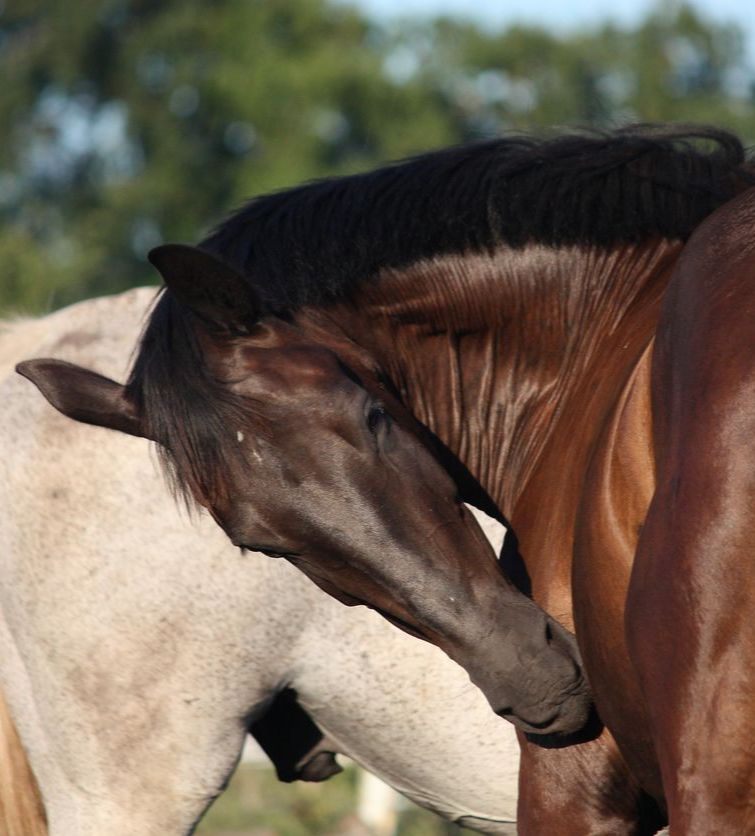
Colic is a well-known, and well-feared, term for digestive tract disturbances causing abdominal pain for horses. Although ranging from mild to very severe, colic should always be taken seriously. The equine tract narrows in many places which increases the chances of blockages and fermentation overload in the hindgut can mean gas buildups.
There are several types of colic a horse can have: impaction, gas, spasmodic, and displacement broadly encompassing them. Impaction and gas are common; a blockage or over fermentation of feedstuffs, respectively. While impaction is typical to see more often in the winter when water intake is reduced due to the cold, gas can occur after a large meal or during a meal change. Similar to gas colic, spasmodic colic is when the muscles in the system spasm or contract, usually in response to increased fermentation due to a feed change, such as a quick transition to spring pastures. Displacement colic is very serious and occurs when the intestines themselves move or even twist.
Recognize the signs
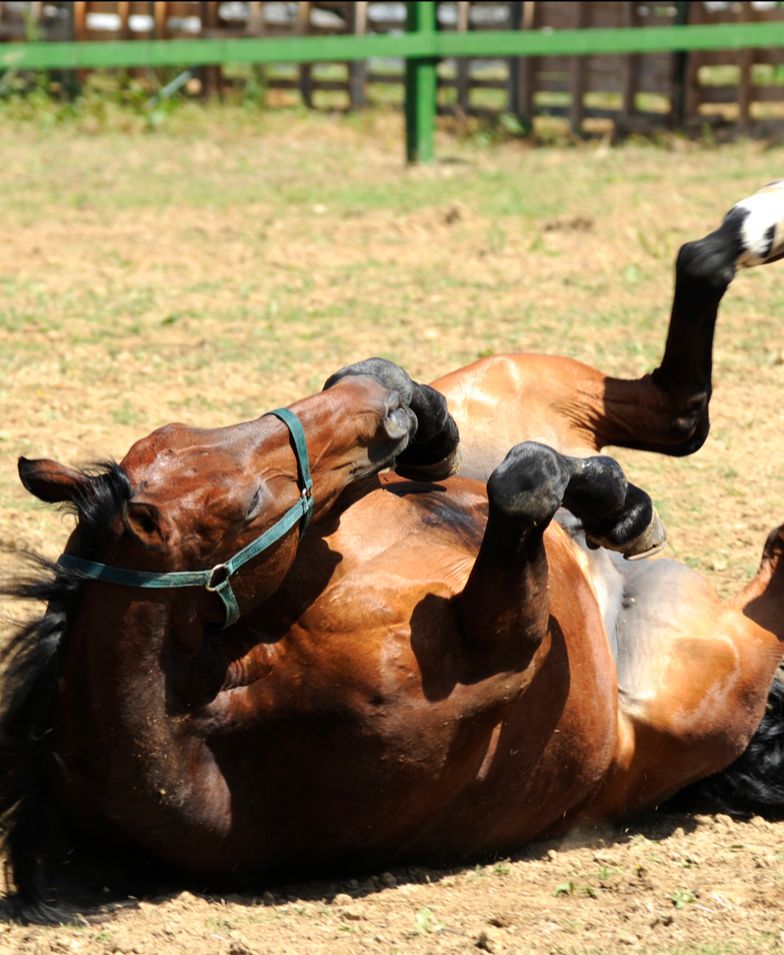
Regardless of the type of colic, many people are well-versed on the tell-tale signs: kicking or looking at their stomach, repeating lying down and/or rolling, and general restlessness. Other signs that may not be evident until investigated further include decreased gut sounds and slow capillary refill. Decreased gut sounds means there is likely a blockage and food is not moving along the tract, and slow capillary refill can indicate dehydration. Capillary refill is determined by pressing a finger to the horse’s gums and determining how quickly colour returns to the pressed area. Dehydration can be further investigated by pinching an area of the neck or shoulder and determining how long the skin takes to snap back. The longer the skin takes to snap back, the more dehydrated they are.
Do not wait to call the vet for a colicky horse – while some forms can be mild and resolve on their own, administering your own pain control can easily mask a more serious form of colic that may require surgery.
Tips to reduce the chance of colic
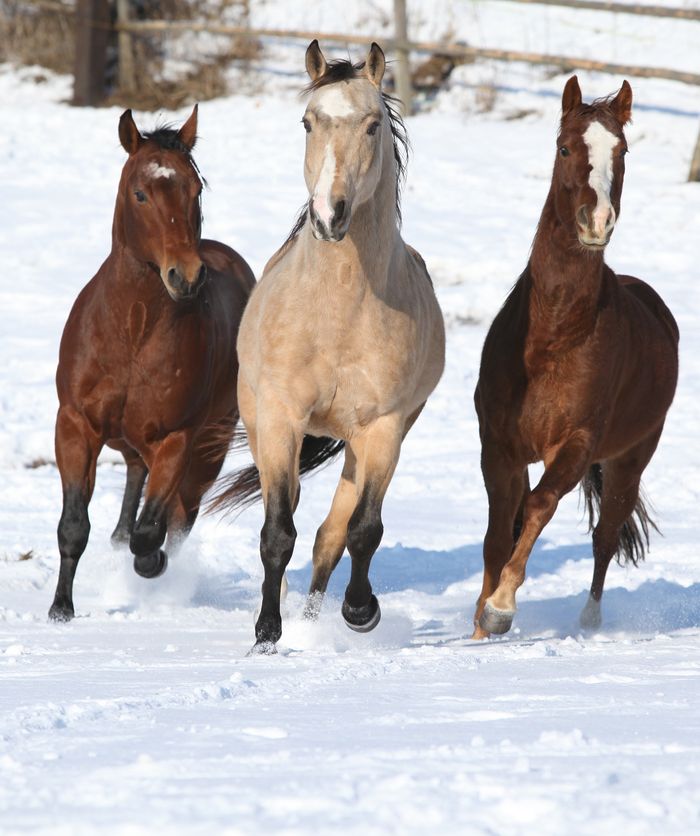
Hydrate, hydrate, hydrate!
Horses can (and should) drink around 20 litres of water at least per day. Water helps to keep the digestive tract flowing and reduce the chances of obstructions. If your horse is not a big drinker, especially in the winter as it gets colder, make sure they have access to a salt block or add salt to their meals to encourage drinking more often.
Feed quality forage consistently and turn out often.
Although not always possible in Canada with our often inclement weather, allowing your horse free access to hay and as much as exercise as possible are great ways to prevent episodes of colic, as these are things your horse was designed to do. Long before horses were domesticated, their ancestors were foraging on low quality feedstuffs over a significant distance – meaning they were always on the move and constantly eating to try to get some nutrients out of poor forage.
Forage is the core of the equine diet, up to 2% of their body weight per day should be composed of good quality hay or pasture. This is what keeps the tract flowing and the regularly fermenting microbes in the hindgut happy. The microbial population breaks down the fibrous plant material for energy, so consistently feeding that bacteria is best practice. Plentiful turn out and exercise let’s your horse naturally move around it’s gut.
Feed concentrates in small meals.
Speaking of those microbes, they go into overdrive when we add concentrated meals. The reality of domesticated horses is that we generally do need to supplement their diets with added protein, fat, and nutrients. Even the best quality hay is usually deficient in what they need not only in order to survive but also to perform the tasks we give them as competitors or athletes. This means they are usually receiving at least a few pounds of added foodstuffs per day to keep their body condition and ideal health.
When feeding grain, be sure to split the daily recommendation into two (or three, if you live on farm and it is possible) smaller meals. This gives the microbes less volume to handle, reducing the chance of gas buildup. Maintaining the consistency of the microbial population is also why we always advise making feed changes and turn out to spring pastures slowly – the equine gut needs time to adjust to feed with new or different ingredients.
Knowing your horse and their normal behavior and attitude will go a long way in catching colic quickly. If you suspect colic in your horse, remove additional feed so as not to potentially put more food into a blocked system, get to hand walking to make those insides mobile, and call your vet right away.
Check out some of our featured products below that are ideal for that colic-prone equine in your stable. Fat-condensed, low feed rate and high fibre products mean you can feed less to maintain great condition, while keeping that digestive tract flowing!
For more information or to schedule an on-farm call or hay analysis from one of our reps, visit our website, contact us, or email us directly at: happyhorses@masterfeeds.com
Product Spotlight
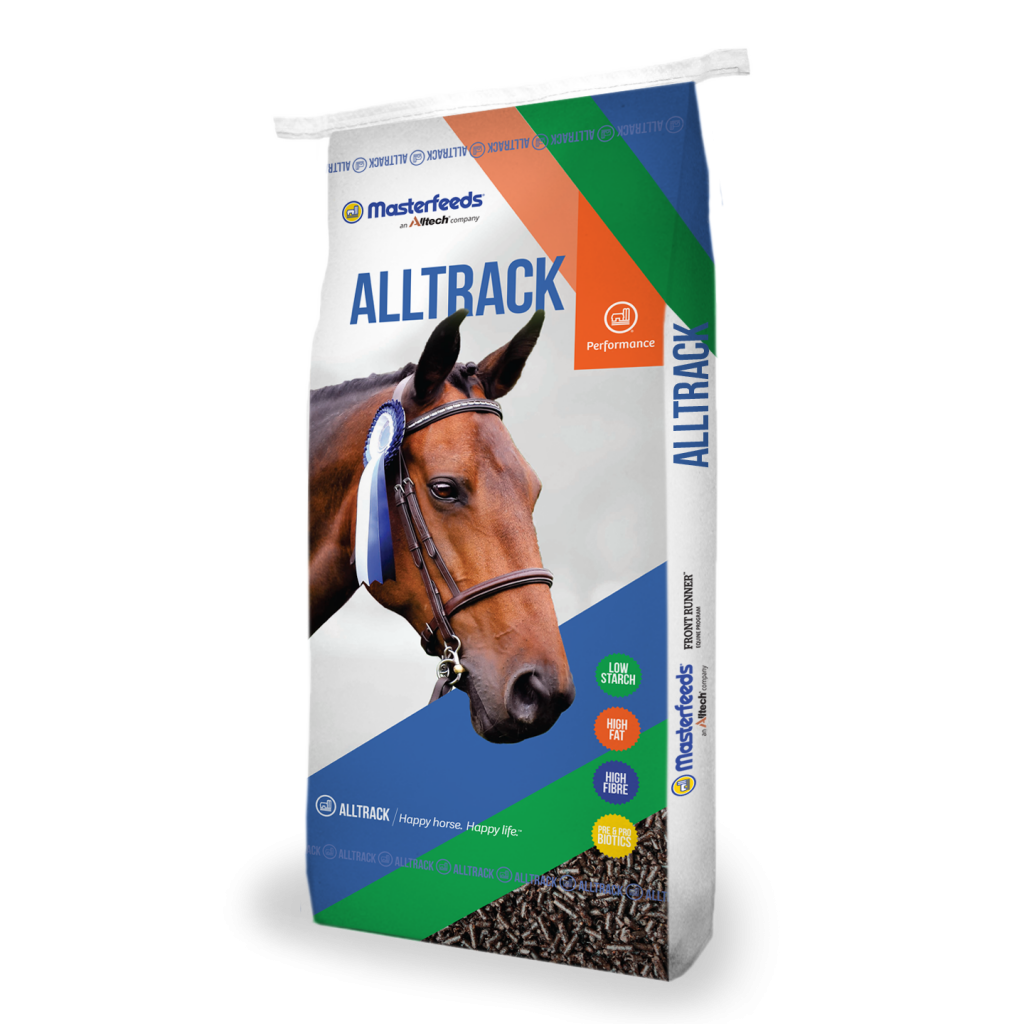
ALLTRACK (TEXTURIZED) EAST | WEST
FOR ALL TYPES OF EQUINE ATHLETES
Alltrack is a great choice for owners and trainers looking for a very low starch texturized feed for high performance athletes. A blend of high quality fibres, beet pulp and soft pellets fortified with protein, vitamins and minerals and blended with oil and molasses makes a palatable complete and balanced feed. It promotes good digestive and muscle health to keep your horses feeling great and ready for all sports and all tracks.
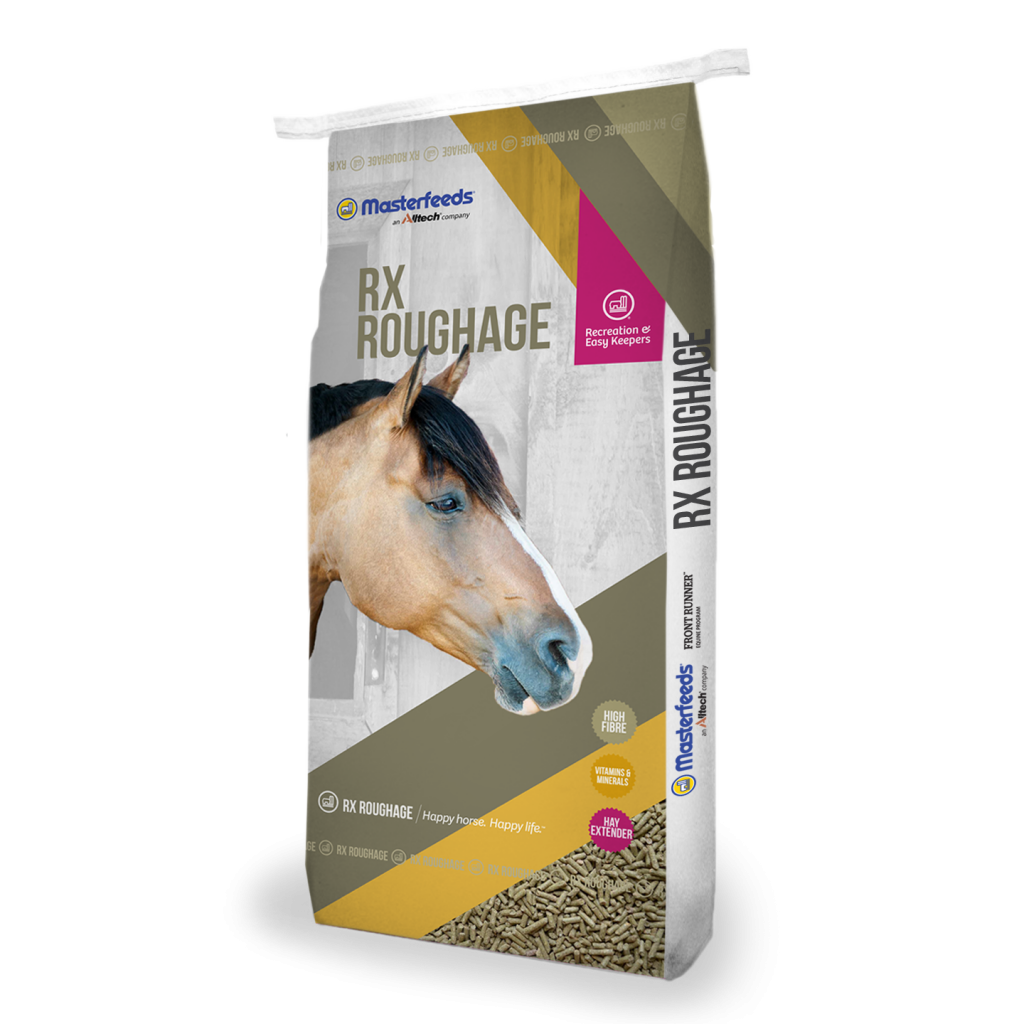
RX ROUGHAGE (PELLET/CUBE) EAST | WEST
MULTI-USE FOR MATURE HORSES & PONIES
Use as a high fibre feed, and as a hay stretcher and extender at times when hay is in short supply. Fortified with a lower level of vitamins and minerals it is safe to be fed at very high levels as a complete hay replacement when needed.
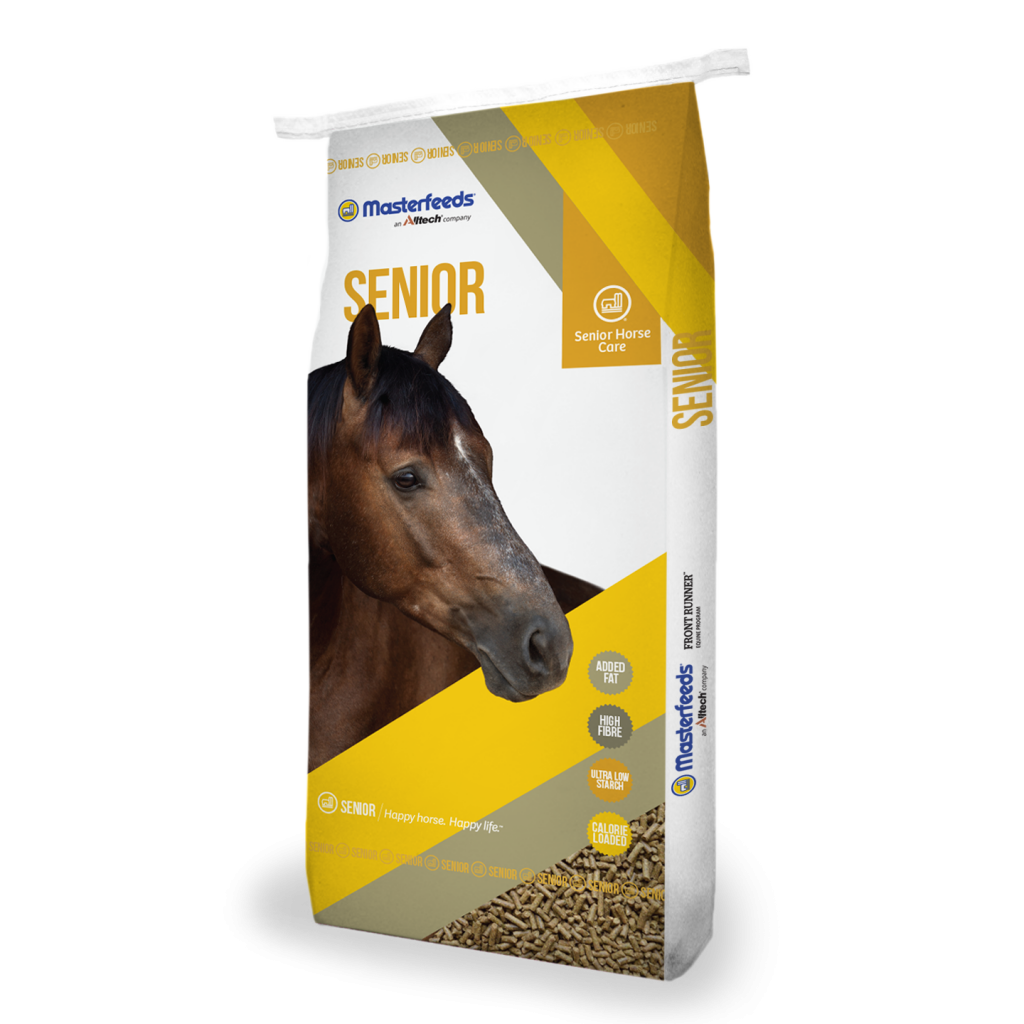
SENIOR (PELLET) EAST| WEST
FOR THE SENIOR HORSE OR PONY
Masterfeeds Senior is our lowest NSC complete feed. It is ideal for the senior horse and also works very well for horses needing an ultra low starch ration with added fat. The premium high calorie digestible fibre sources blended with 6% fat from all vegetable sources makes it a safe choice for working, pleasure, or retired horses who are very sensitive to added starch in their feed and need a low glycemic ration.
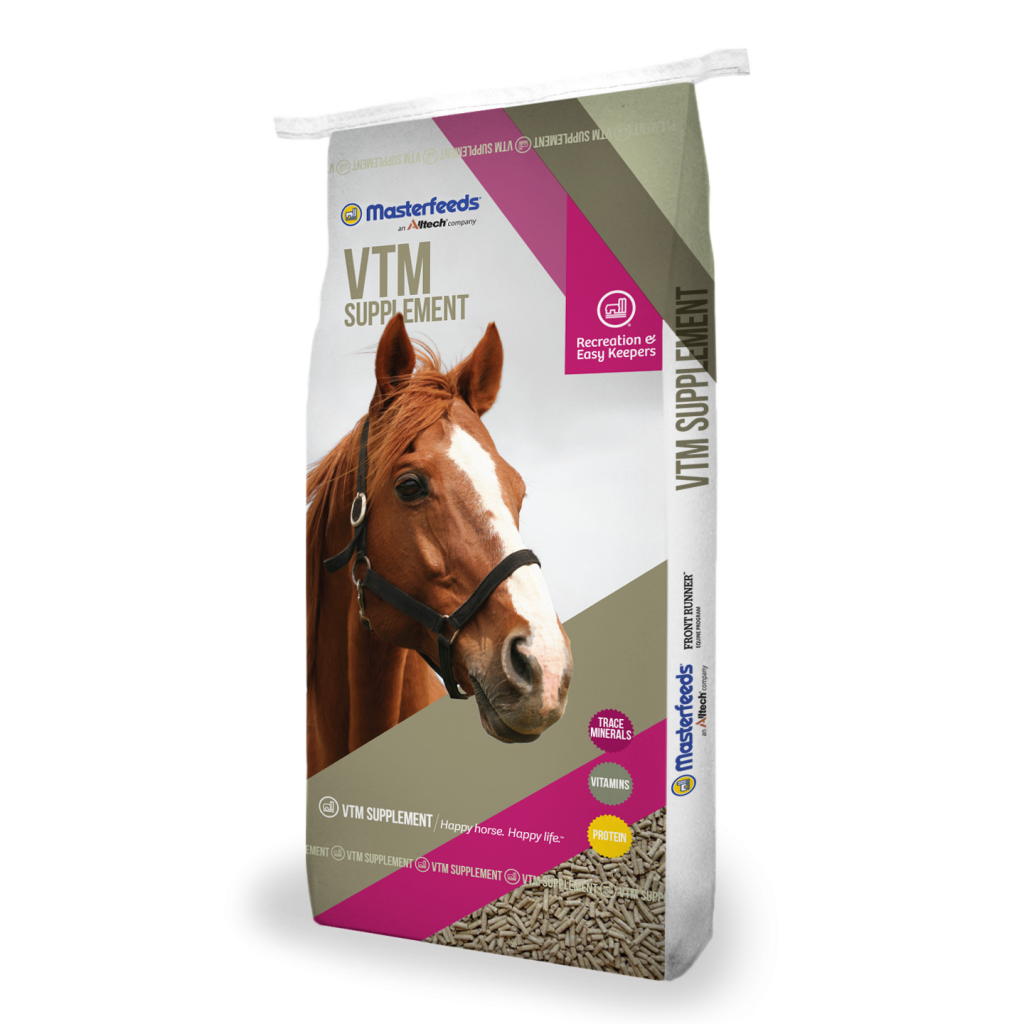
Related Posts
- Two Ends of the Spectrum: Feeding the Under or Over Weight Horse
- Gastric Ulcers and Tying Up
- Guide to Deworming Your Horse
- Tips to Minimize Parasites on the Farm
- Hay Shortages and Quality Issues: Finding Fibre Alternatives and Balancing Rations
- Considering Calories: Weight Loss Solutions
